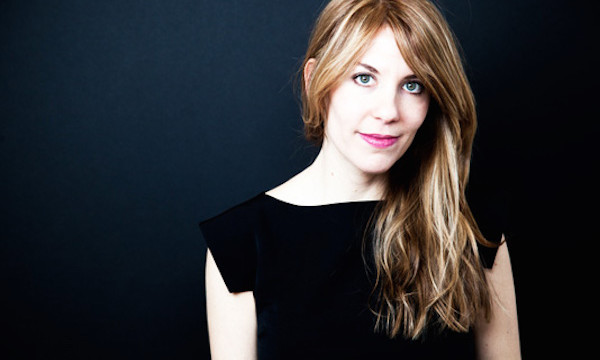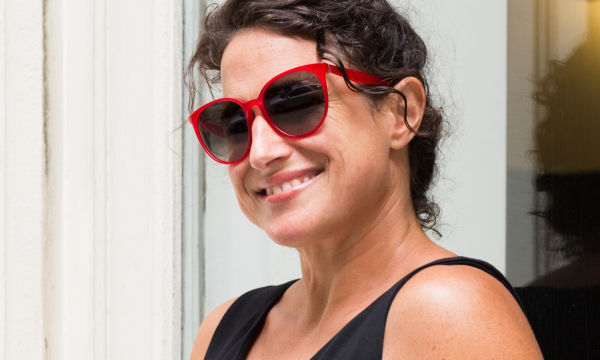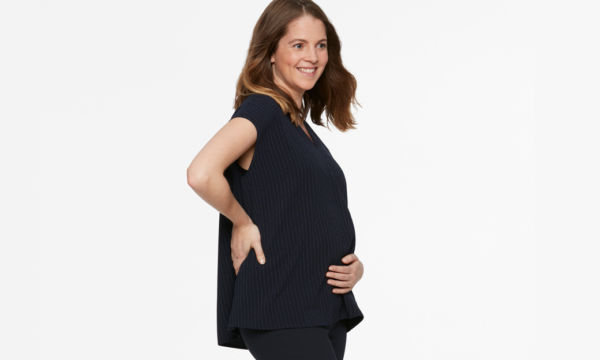Art Within Reach: The Women Behind the Affordable Art Fair
September 09, 2017 | Filed in: Woman of the Week
While many art fairs can be intimidating extravaganzas, full of velvet ropes and six-digit prices (“upon request”), the Affordable Art Fair is anything but. Featuring a broad, fresh selection of works by living artists from all over the world, the Affordable Art Fair aims for accessibility, with prices starting at $100 and capped at $10,000 (and more than half the works under $5,000). Whether you’re looking to start your “collection”—or just want to browse—you can do so from September 14-17, during the fair’s biannual New York run (get a special discount on your tickets, here).
Last week, Cristina Salmastrelli, the fair’s co-director, hosted us in her Brooklyn apartment with Vanessa Seis, who directs the fall fair, to talk art world careers, artists to watch, and the importance of a good SWOT analysis.
ON CAREER BEGINNINGS
Cristina Salmastrelli: I started as a chemistry major in college. I loved science, and I loved being in the lab. Then, as an elective my freshman year, I took a class on contemporary art and said, ‘I have to change majors. This is it, this is what I want to do.’ I went straight from undergrad to grad school at NYU for art history, and then started working in art fairs.
Vanessa Seis: I never thought I would end up working art fairs. I always wanted to study biology, but then my sister did that, and of course you never want to do what your sister does. Instead, I got into music. When I went to college, I decided I would study media management and economics, because that would give me a foundation to work in music or broadcasting TV. After school, I started out in the music industry in Germany, then worked at an online startup. From there, I was introduced to working with galleries and museums, and I loved that world and wanted to immerse myself in it. When I moved to the U.S., I started working at the Neue Galerie, and through that, I came across the Affordable Art Fair.
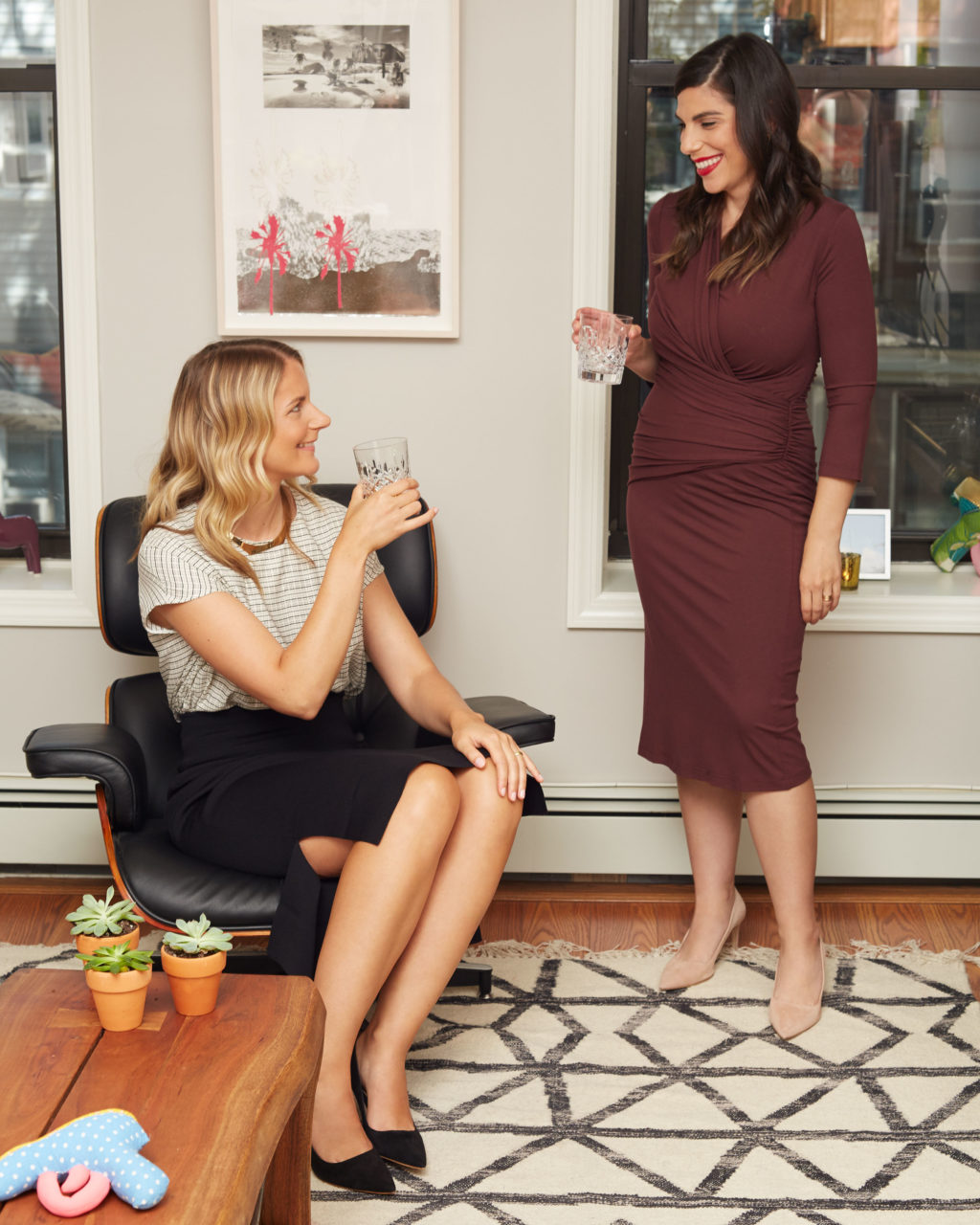
Cheers: Vanessa, left, wears the Didion 3.0 top in domino with the Harlem skirt in black; Cristina, right, wears the Casey dress in chestnut. On the coffee table is an artwork by Natalie Baxter, and above Vanessa is a limited-edition print by Cary Hulbert; both artists are exhibiting at the fair.
ON JOB SHIFTS
Vanessa: I saw moving to the U.S. as an opportunity to change industries. Germany is very linear: You go to school for something, and that defines your path to college, which defines the industry you go into and the job you will do. It’s not very friendly to people who want to switch careers. When I moved to the States, I had identified a hunger to be around visual arts people, and I decided I would start from scratch. My husband brought me here; we met at a club in Germany, and when it came to the nitty-gritty of deciding how we would be together, I realized, Oh, I always wanted to live in New York at some point. It’s definitely hard to erase your career and start from zero; you have to put your pride aside. My first job was at a museum, in a visitor services position. That was my foot in the door in the New York arts’ scene. From there, I met people who introduced me to people at the Affordable Art Fair. I started interning with the company, and got hired permanently, and got promoted. The company really nurtured me. The U.S. is very open to people who want to switch careers. You get judged based on how good you are at your job, and that opens the door for so much talent. If you’ve proven you’re good, that gets rewarded here. It means that anything is possible.
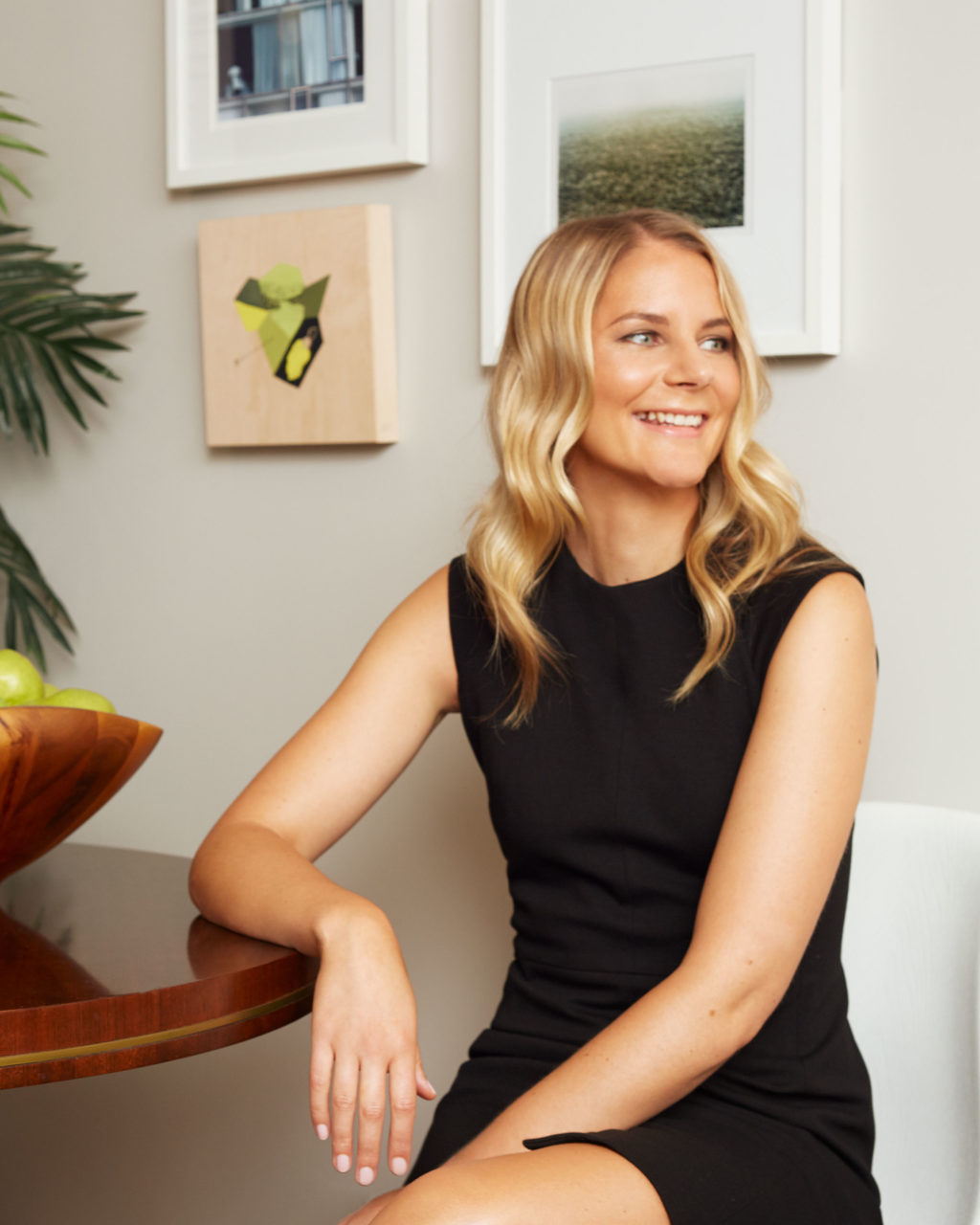
Vanessa wears the Katie dress in black.
ON PUSHING EACH OTHER
Vanessa: I see Cristina as my mentor. When I started working at the Affordable Art Fair, she took me under her wing. She said, “You’re really good at this. I think you should become a director.” Even when I wasn’t so sure, she literally showed me the path. We have a relationship of constantly being each other’s sounding boards. It comes naturally because we have different personalities, so we gravitate towards different things. When I’m uncomfortable with something, Cristina comes in and is like, “You know what, we should do it.” We push each other constantly.
Cristina: When Vanessa came on, she was an intern for another department, and she caught my eye right away. I said that I’d like to work with her, and once she started helping me, I came to feel that she is like me, just one version better. You know the expression, “Always hire someone smarter than you”? I definitely feel that way with Vanessa. Basically, I lay a foundation in my roles, and then Vanessa comes and makes sure they’re that much better. It’s very symbiotic and goes back and forth. If we put our heads together, we will come up with a better answer than if we sat by ourselves. We are constantly talking. It’s made me become a better professional and a better director, and it’s a fun working relationship. Both of us are very interested in improvement. We want to improve not only the Fair and the people who report to us, but also ourselves.
ON TIME MANAGEMENT
Cristina: Planning these art fairs is almost like having a wedding twice a year. There are times that get crazy, with 16-hour days, and also times when it ebbs and flows.
Vanessa: I find it super satisfying, actually. Half a year for a director is not too little or too much time, and you work towards this mission and it comes to life, through all the strategizing and paperwork and brainstorming. It becomes an actual experience that you give to the New York audience that makes them feel something. Then, after five days, you wrap it up and write a report and you’re done with it. You implement things that you learn and you keep evolving. I find that it’s a very satisfying cycle.
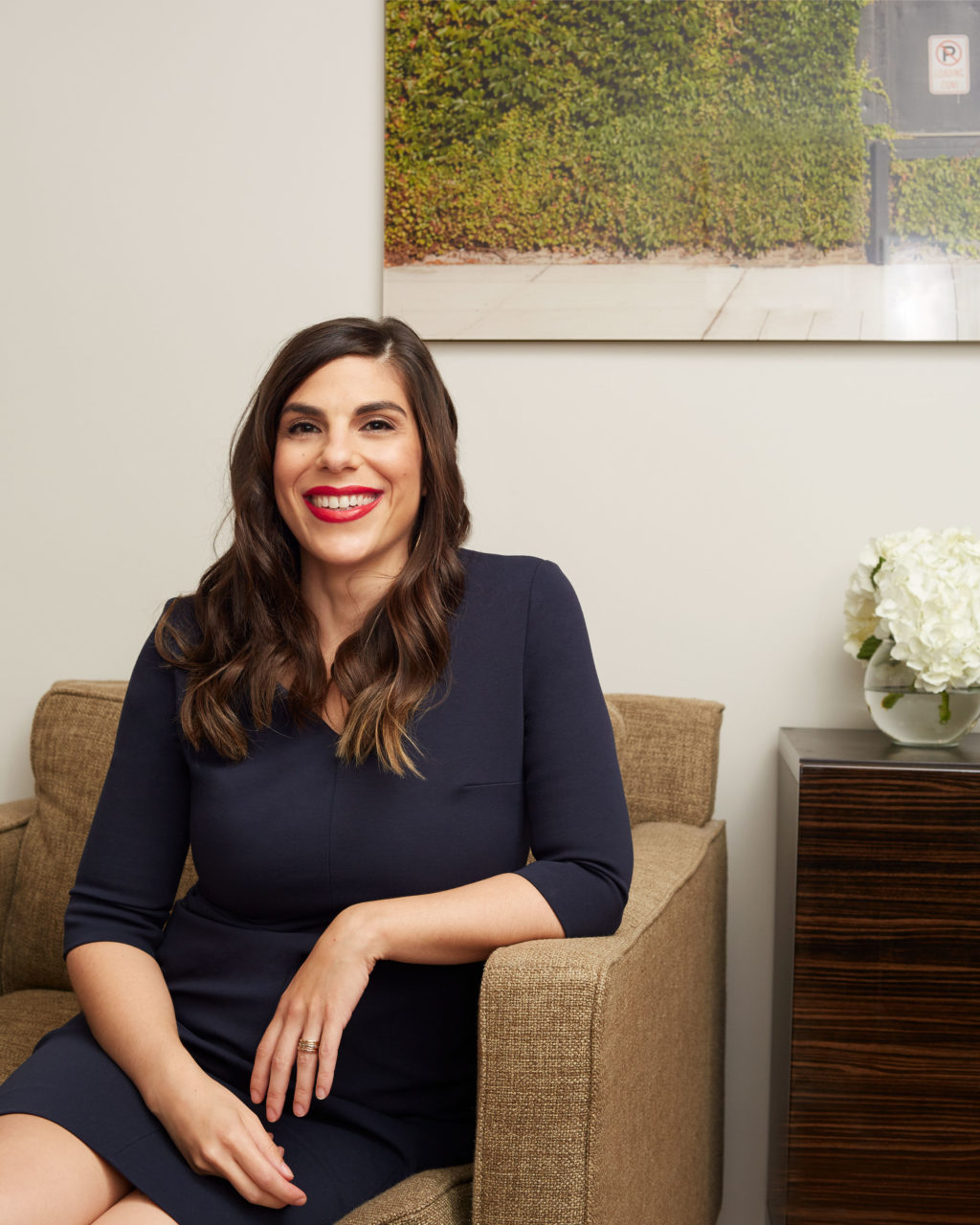
Cristina wears the Mona 2.0 dress in galaxy blue.
ON ARTISTS TO WATCH
Vanessa: This fall, we’re doing a recent graduate exhibition with Devra Freelander and Natalie Baxter, curated by Regina Parkinson. Devra Freelander and Natalie Baxter are amazing, up-and-coming young women in the arts scene who just launched their careers and are pushing the boundaries. Freelander’s work is a comment on global warming, and Baxter’s addresses subjects like gun violence in the U.S. It’s strong, political work but it’s also beautiful to look at. They’re so driven, and I’m so glad to offer them a platform.
ON THE SELECTION PROCESS
Cristina: It’s always emotional. Gallery owners do this job for a passion, and rejection is hard. We’re proud that all the artists we show at the fair are living and able to make this their profession. So many people can’t devote their working hours to making art, and we’re here to help them do that. It is an extremely difficult process when we have to make decisions about who to accept, for both of us. Ideally, we’d have all the space in the world for more galleries to come and more New Yorkers to see these artists. But we have to say, “We can work within our restrictions, and this is where we are right now.” We’re constantly looking for ways to expand our location so that we can have a perfect, happy fair where everyone’s in.
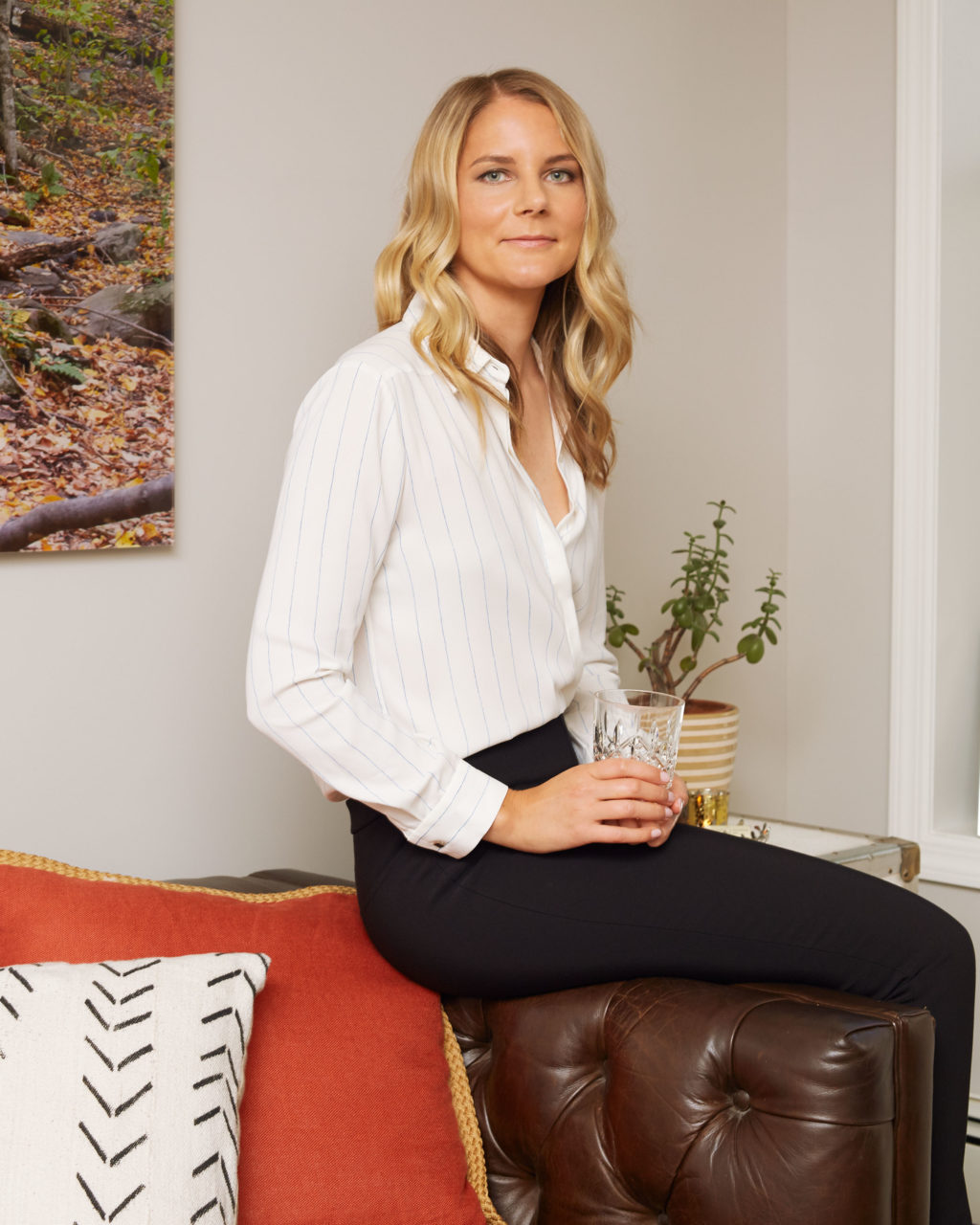
Vanessa wears the Lagarde 2.0 shirt in ballpoint stripe and the Foster pant in black.
ON TEAMWORK
Vanessa: As a manager, I’ve realized that it’s in my hands if I don’t want my team to burn out. We’re not saving lives, so I don’t want them to check email when they’re off. As a manager, you can make that difference—you are the role model for your team, and you take care of them and make them feel okay about asking for time off or working from home. We don’t judge you by the hours you crunch in the office; we judge you by the outcome of the results that you product. That’s the only thing that matters.
Cristina: We weren’t great at work-life balance in our 20s, but as we’ve gotten into our 30s, we’ve realized that you need that time off. You need to step away from work in order to be your best professional self, and even sometimes during work you need to take a break and shoot the breeze. I spend more time with my colleagues than sometimes even my husband and son, so I want to be friends with them. I want to know what’s going on in their lives. If we have a 20-minute conversation about Kim Kardashian, we’re bonding on a different level, and that helps me understand our dynamic and manage personalities. If you don’t have happy people working with you, your product is not going to be as good.
ON STYLE
Vanessa: I’m tall, and it can be tough to find skirts that are the right length, so I usually wear pants. I buy a lot of my clothes in Europe, and I like bold colors, like a bright red. Being comfortable is very important to me, too. I surf on weekends, and I’m constantly going to visit artists and galleries, so I need to be able to move.
Cristina: Right now, my wardrobe is a little bit in flux because I just had a baby, but I’ve always loved dressing up. I like to wear dresses, and I prefer V necklines—the Mona dress is one of my go-tos. A red lip is my thing: It always makes me feel polished.

Cristina, left, wears the Casey dress in chestnut; Vanessa, right, wears the Didion 3.0 top in domino with the Harlem skirt in black.
ON SELF-AWARENESS
Vanessa: I definitely had periods of being lost in my 20s. Whenever I feel like I’m stagnating, I like to try a strategy that I learned in a management class during college. It’s a common tool for setting project goals, but it can be applied to our personal lives as well. It’s called a SWOT analysis: Strengths, Weaknesses, Opportunities, and Threats. I’ll do a little session with myself, and sometimes I ask my husband or family members to join me. You do a matrix, and start by asking, “What are my strengths?” Then you list them out. We’re self-critical, so having someone else help with this can be useful. From your strengths, you ask, “What are my opportunities? This is my vision, these are my goals, and this is where I want to place myself in life.” Then you list opportunities and threats. What could be a threat? Is the market changing? And then your weaknesses, which we are all usually aware of—but can sometimes use more perspective on.
Cristina: At one point in my life, I was thinking of tattooing the word “awareness” on myself, because I think it’s so important. If you are aware of yourself and others, this world is a better place, and so is your office environment. When you know where you’re coming from, understand personalities and triggers and pressure points, and work with those rather than around them, you will have better working relationships, and a better product. You’ll have a better outcome. That’s very important in personal life, too. I believe in applying the same things to our personal lives and our professional lives. There is a very gray line: How we act at home is how we act at work. What we want out of home life is the what we want out of work life, especially in our relationships—it’s about nurturing yourself and nurturing others. It makes work a wonderful place to come every day.
Photographs by Maria Karas.







